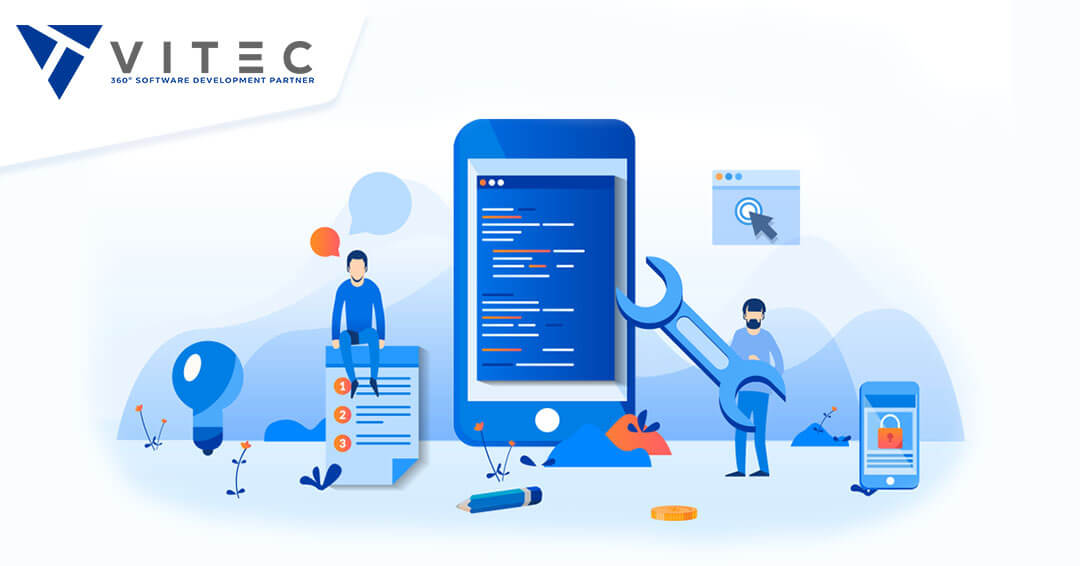Native vs. Cross-Platform vs. Hybrid App Development: What’s the Best Way to Develop An App?

Once you decide that your business needs an app, you’re now confronted with the question – how to develop an app that your potential customers will love?

Native Vs. Cross-Platform Vs. Hybrid App Development: What’s The Best Way To Develop An App?
The internet traffic originating from mobile devices commands 53.3% of the total internet traffic, leading desktop traffic by a substantial margin. That’s hardly surprising when you consider the fact that there are over 3.5 billion smartphone users around the world.
As a business, you cannot afford to ignore the potential of mobile traffic anymore. And, having a mobile-friendly website is just not enough. A fast, user-friendly, and fluid mobile app is critical for engaging your users, delighting them with your brand experience, and converting them into loyal customers.
Mobile App Development: Introduction

Once you decide that your business needs an app, you’re now confronted with the question – how to develop an app that your potential customers will love?
At Vitec GmbH, we receive this question from our clients on a routine basis. In our experience, what makes things confusing for most businesses is the availability of plentiful choices when it comes to app development. From development approaches to technology frameworks, there is no shortage of options when it comes to app development. And, they all come with their own sets of pros and cons.
We have created this brief guide to demystify app development and give our clients the right information to develop the right app development strategy.
Before we dive into the nitty-gritty of mobile app development, you must know a few basic things. The mobile app market is dominated by 2 major platforms – Android and iOS.
Each of these platforms offers an exhaustive list of guidelines to create a secure, user-friendly, and intuitive mobile app that engages your users. For this reason, your app for the Android platform may (or may not) differ from your iOS app in some small ways.
Most importantly, the quality of UX, the variety of features, and the total cost of ownership (TCO) of your app will depend primarily on the app development method you choose. Here are the 3 primary app development methods:
- Native App Development
- Cross-platform App Development
- Hybrid App Development
Let’s take a closer look at each of them and what they have to offer.
Native App Development
Native app development is the designing and building of an app using a programming language that is native to the operating system. Apps designed using this method work exclusively on the OS for which they are created.
Traditionally, the native programming language for the Android OS is Java. In more recent times, Kotlin has also emerged as a powerful native development language for the operating system. Likewise, for iOS, the native languages are Swift and Objective-C.
Developing an app using native language allows app developers to utilize the full potential of the OS. The app can be equipped with a wide variety of features, many of which would be unavailable to apps developed using other methods. Here’s a quick overview of the good and the bad that comes with the native app development method.
Pros Of Native App Development
Performance
Native apps are built lightweight on account of simplified coding, which translates into lightning-fast performance.
User Experience
They offer a rich user experience. Developers can use OS-specific design language, UX elements, and gestures to create a seamless experience that feels natural to users.
Functionalities
Native apps can utilize the full potential of the device’s hardware. That translates to higher security, more functionalities, and a better experience for users. Native apps can take advantage of device-specific hardware to offer additional functionalities such as Access USB input, memory management, and so on.
Updates and Upgrades
Because the apps are written in a language that is natively supported by the OS, it’s way easier to add new functionalities and features into the app.
Cons Of Native App Development
Development Time and Costs
Developing native apps is a resource-intensive process. It can often double your costs for the app, and practically double the development time, as you’ll be essentially developing 2 apps for 2 different platforms.
Code Reusability
You cannot reuse the source code of your app to create another app for a different platform.
Development Complexity
Native app development requires extensive development skills, which may not be available with boutique app development companies. This increases the costs of development.
Best Native App Development Technologies

Kotlin for Android
Kotlin is a statically typed programming language that can be converted into Java, which is the default native programming language for Android. However, Kotlin offers several advantages over Java. Coding with Kotlin can be done with up to 90% less code in comparison to Java. Less code means fewer bugs and faster development. Although Java is still a better choice for large apps for several reasons, Kotlin is an excellent alternative for small apps with fewer features. Either way, both of them use Android Studio, the official integrated development environment (IDE) for Google’s Android OS, as the development framework.
Swift for iOS
Swift is a programming language developed by Apple for its different operating systems – iOS, tvOS, macOS, and watch OS. Naturally, it’s likely to be a better fit for iOS apps. However, that’s not entirely true. Objective C also happens to be a great choice for developing iOS apps because of its stability. In recent years though, app development companies choose Swift over Objective C because of its higher performance, bigger community, and more robust support from Apple. For these reasons, it’s easier to find developers experienced in Swift rather than Objective C. Similar to Android Studio, Xcode is the official IDE by Apple for iOS app development.
Cross-Platform App Development
Cross-platform app development involves designing and building a single app that works on multiple platforms. The cross-platform apps are not designed for specific platforms and, therefore, do not use platform-specific programming languages.
By developing one codebase, you can deploying an App for both Android and iOS users. In fact, some of the cross-platform development platforms even support other mobile platforms too. This saves the costs, time, and hassle of creating and managing several different apps for different platforms. Naturally, it’s the default choice for small and medium-sized businesses. Here’s why cross-platform apps are a good and bad choice for different businesses.
Pros Of Cross-Platform App Development
Development Costs
Compared to native app development, only half the number of developers is required. However, they must now create a larger codebase for the cross-platform app.
Code Reusability
The same codebase is used for building apps for different OSes, which means that the app, once developed, can be ported to as all the mobile platforms available in the market.
Development Time
It takes less time to develop and deploy on multiple platforms, which translates to faster time-to-market.
User Experience
Consistent features and user-experience across platforms and devices. So, even when your users switch platforms and devices, their experience on your app does not.
Cons Of Cross-Platform App Development
Functionalities
Cross-platform apps do not make plentiful utilization of native design and UX features, thereby offering a not-so-good user experience. They also cannot use several device-specific functionalities, although this is slowly changing
Performance
Although most users may not notice it, there’s a perceptible drop in app performance when compared to native apps
Updates and Upgrades
And, app customization options are typically limited by the framework used in the creation of apps.
Best Cross-Platform App Development Technologies

React Native
React Native is an open-source, cross-platform development framework launched by Facebook in 2015. The framework is built on JavaScript, which means that a JavaScript developer can easily create a cross-platform app using React Native. React Native apps do not suffer from lag problems, use a greater number of device-specific hardware (such as an accelerometer), and offer a similar user experience as native apps.
React Native apps are relatively fast without sacrificing user experience. Also, the fact that it enjoys a sizeable community of developers means that it’s easier to get useful and clear documentation when facing issues.
Flutter
Flutter is a powerful cross-platform app development framework launched by Google in 2017. Although relatively new, Flutter has managed to carve out an impressive fan following among app developers for many reasons. For one, Flutter apps can utilize device GPU to offer a more fluid and immersive user interface to users.
App development using Flutter is fast, and the updates management is quicker. In fact, businesses don’t have to update UI contents manually. They only need to update the variables, and the UI changes would promptly update. On top of it, the framework uses a programming language called Dart, which substantially improves app performance. Flutter apps are fast, easy to build, and cost less. Naturally, businesses love them.
Hybrid App Development
The Hybrid app development method combines web development technologies like HTML, CSS, and JavaScript with mobile-compatible technologies like WebView to simplify the app development process. The app is developed using web technologies, which accelerates the development process, while drastically reducing development costs. The app is then wrapped in a native container, such as WebView, responsible for rendering the app’s UI to a mobile user and giving it access to the mobile hardware functionalities.
Pros Of Hybrid App Development
Development Time
Easy to develop, deploy, and maintain. It’s the fastest way to achieve huge market exposure in a limited time.
Development Costs
Costs a fraction of what native apps do.
Code Reusability
The same app can be wrapped in platform-specific native containers to port it to each mobile (and even the web) platform.
Cons Of Hybrid App Development
Performance
Hybrid apps are plagued with performance problems. The web technologies used in building hybrid apps are resource-intensive, and their needs are met easily on desktops. However, smartphones, with their relatively low computing power, cannot supply requisite power. This translates to a lag-ridden user experience on the phone.
User Experience
Hybrid apps cannot utilize device-specific customizations, which means that a hybrid app will stand apart from the other apps in terms of UX.
Updates and Upgrades
More often than not, hybrid apps use third-party plugins to access device-specific hardware. Sometimes, the plugins may be outdated.
Best Hybrid App Development Technologies

Ionic
Ionic is an open-source, cross-platform app development platform that uses HTML, CSS, Cordova, JavaScript, and Angular. Its robust front-end elements allow developers to build fast progression web apps that offer a native-like user experience on mobile. Ionic apps are smooth, look stunning, and provide a seamless experience. It’s easy to learn Ionic, which means that it’s easy to find a capable developer, and the development time and costs tend to be low for Ionic apps.
Mobile Angular
Apps developed using the Angular app framework look great and offer intuitive features. Mobile Angular is an open-source framework licensed by MTI. It uses a mix of Bootstrap and Angular JS, although there’s no dependency on any Bootstrap libraries like jQuery. Mobile Angular offers several native-like features like overlays, switches, navbars, scrollable areas, and so on, which allow developers to create a native-like experience for users.
What Is The Best Way For You?
The three mobile app development methods come with their own sets of advantages and drawbacks. And this makes them relevant for different types of businesses.

When the budget is limited, the urgency to launch is greater, and the need to reach a large number of users is high, a hybrid app is a right choice.
On the contrary, when the budget has no limits, UX matters more than a quick launch, and a dedicated team is available for managing the apps on different platforms, a native app would be more suitable.
However, when the budget is limited, but a native-like app UX is desired, a cross-platform app would be ideal.
To learn more about the various mobile app development options – technologies, frameworks, and methodologies – and find out the best option for your business, get in touch with us.




Aleksandar
Aleksandar is a passionate digital marketeer with 6+ years experience in various industries. He finds the data & numbers are the way to market things, but also that words are the bridge between just a numbers and brand value, purpose and strategy brought to a user. Using the 5 'W' methodology in creating the content, he is adding 'a plus to a minus', creating simple, but informative blogs & case studies about latest trends in tech & digital indsutry.